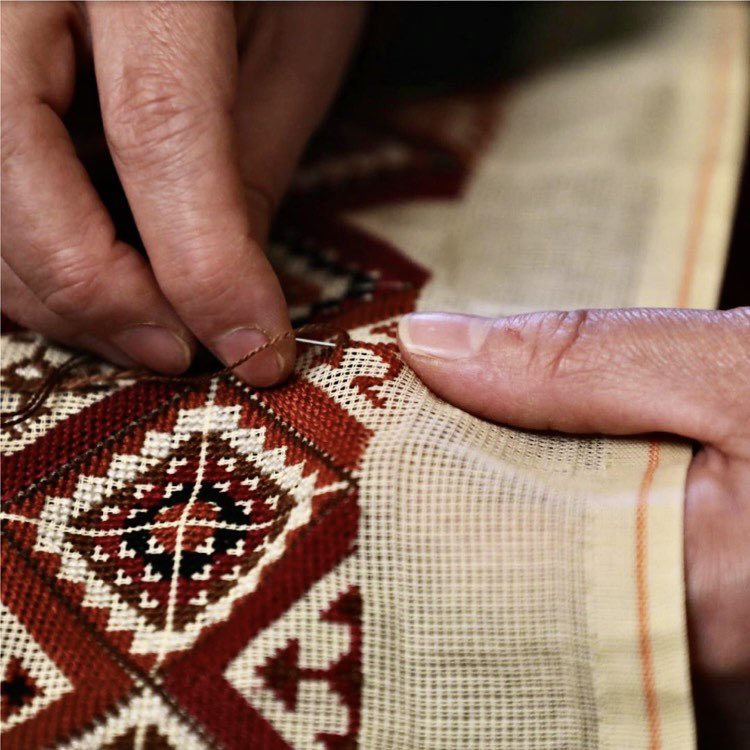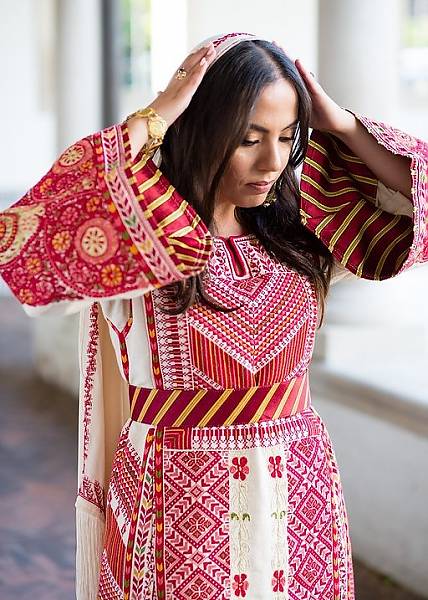
A young girl sits on the stone steps of her home, watching her mother, and other female family members, create the traditional Palestinian handcraft of “tatreez” (hand embroidery). They sit with balls of bright embroidery thread in baskets, stitching a design on local cotton or linen using cross stitch techniques, or remaking a heritage garment, painstakingly small stitches in bright colours, across the bodices, in panels for sleeves and on the hems of their skirts. The visible record of their love for their land and storytelling of their shared history, appears in the motifs, olive trees, buildings and local fauna and flora.

The traditional Palestinian “thobe “(long loose fitting dress) was worn traditionally in villages near Jerusalem and in Ramallah, and Bethlehem before the colonisation and now destruction of Palestine. Historically, the combination of motifs, colours, and style of embroidery (tatreez) on a woman’s thobe linked to a very specific village and region, a personal visual ethnography now lost with displacement.
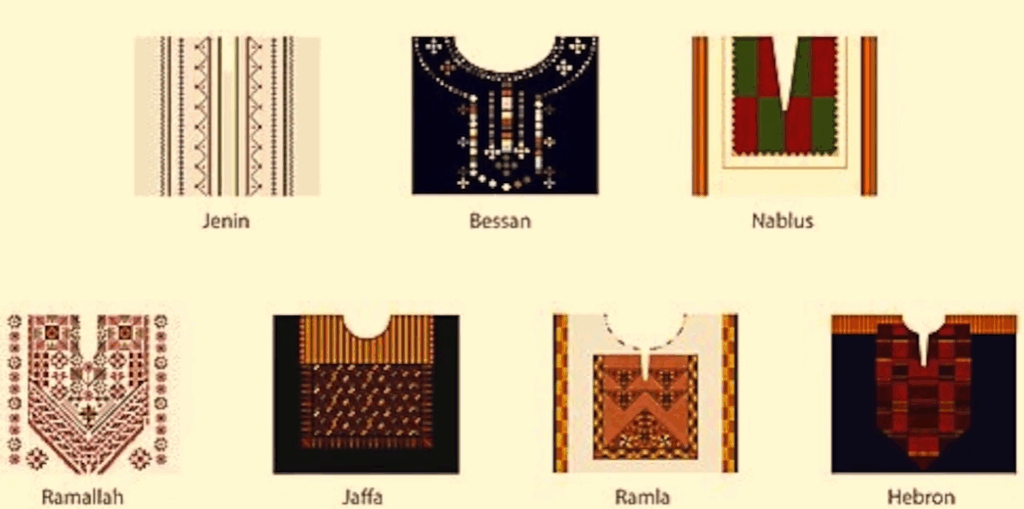
Incorporating traditional motifs of Palestinian food, flora, architecture and daily life in colours that indicate both a regional identity and marital status, Tatreez has been formally recognised by Unesco on their Intangible Cultural Heritage List.
After the 1948 Nakba many Palestinian families were uprooted, displacing the connection traditional designs made between women’s history and their home. After the Palestinian flag was banned, the colours were embroidered onto clothing. Later, Palestinian struggle against the Occupation appeared through colours and other symbolism like doves, women literally wearing resistance and activism.

West Bank embroiderers of tatreez are still hand-stitching fine home decor items, panels for clothing, and full thobes, for celebration or wedding garments, to market on sites like Etsy and Pinterest.
Bethlehem, a center for design and pilgrimage since ancient times, is famous for rich and distinctive use of couch stitching, “tahriri” or “taqsireh”, with heavier cord secured with gold or silver thread in intricate patterns highly valued across Palestine, and now by discerning buyers online.
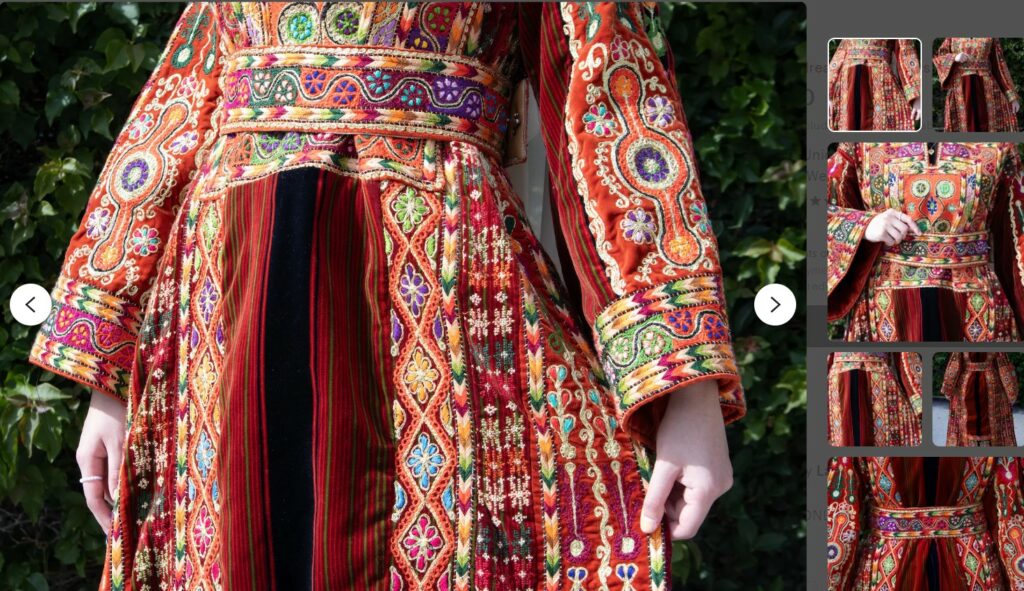
Nol Collective supports Palestinians creating modern Tatreez designs, to reach the global marketplace, including a local upcyling project “souk samara” working with vintage panels. The Collective helped preserve the traditional Majdalawi handweaving technique, traditional to the now demolished town of al Majdal in Gaza. Weavers were helped to safe premises recently, to preserve their craft. Funds were raised from sales of Tatreez.
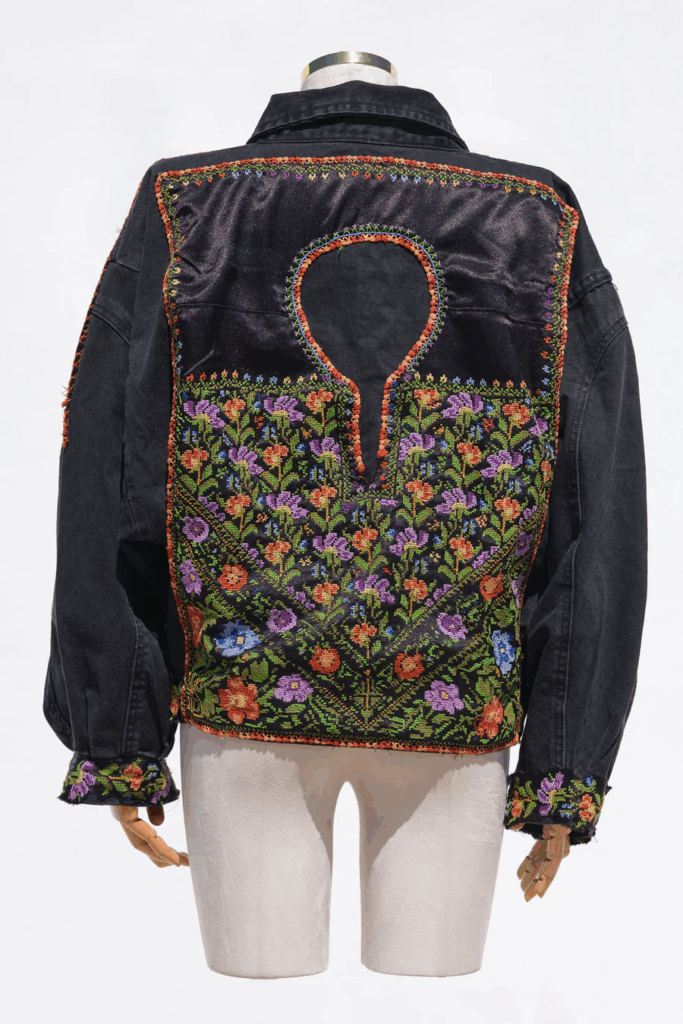
Action :
Please try to confirm that original tatreez work bought online supports a Palestinian family, as you may be buying a much loved family heirloom or an item representing hours of Palestinian refugee labour. Many embroiderers now depend on these traditional skills to support their families in very difficult circumstances, benefits must go back to them.
Additional References:
https://www.unesco.org/en/fieldoffice/ramallah/palestinian-embroidery
Book by Rachel Dedman “Stitching the Intifada: Embroidery and Resistance in Palestine” https://www.commonthreadspress.co.uk/products/stitching-the-intifada-embroidery-and-resistance-in-palestine
Talk by Rachel Dedman on the links between Embroidery and Resistance in Palestine : https://courtauld.ac.uk/whats-on/material-power-embroidery-dress-and-resistance-in-palestine/
FANN, B.A. (2023) The Art of Tatreez – Palestinian Embroidery, Bayt Al Fann. Available at: https://www.baytalfann.com/post/the-art-of-tatreez-palestinian-embroidery (Accessed: 1 June 2025).
Possible sources of Tatreez for purchasing, please report back if you know other reliable sources or any issues with these.
- https://www.hadeel.org/suppliers/sulafa-unwra-embroidery-project/
- https://www.shoppalestine.org/pages/our-story
- https://www.instagram.com/palestinian_tatreez/
- https://www.instagram.com/samarasouk/

